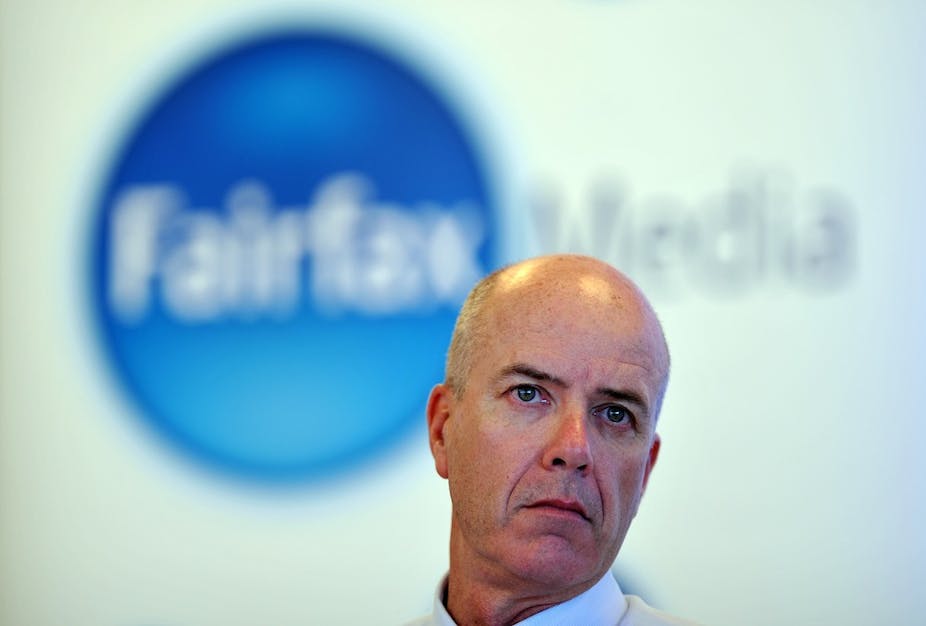The Fairfax Media group has undertaken yet another corporate restructuring in an attempt to shore up the company share price.
However, it might just be a Titanic gesture that staves off the inevitable collision with the iceberg of financial realities.
The current shuffling has seen the company recreated with five divisions that sit under the CEO and Managing Director. It is the positioning of the five new divisions that creates the most interest.
At December’s AGM last year, Fairfax CEO Greg Hywood said the board had ruled out breaking up the company, but the new structure looks like it is is ready-made for a sell-off.
The largest division will be called Australian Publishing Media and it will house the main daily mastheads in one cell while the Australian Financial Review and business sections of the dailies will be in a separate cell.
Lifestyle inserts, Good Food and Epicure will be in a third cell called Life Media and the regional and rural mastheads will be in a fourth cell within the publishing division to be called Australian Community Media.
The only income stream left from the once mighty rivers of classified gold is the property market Domain, which is both in print and online. It will remain stand-alone.
The other online businesses will be brought together under the umbrella of Digital Ventures and includes holiday/travel site Stayz, TenderLink, the dating site RSVP and other digital business units.
Fairfax Radio and Fairfax New Zealand will remain relatively intact, for now.
All in-house corporate functions will be shared across the divisions and this is causing speculation that there will be another round of redundancies in sales, marketing and back office areas of the business.
Fairfax announced a small half-year profit of $400 million in February after paying down debt from nearly $800 million to just under $200 million. But this has done little to reassure investors.
The Fairfax share price was under 50 cents at the end of 2012, but rallied in the first quarter of 2013. It stands at 61 cents today; still a shadow of its former glory and 15 cents lower than in April 2012.
Advertising revenues are continuing to fall and while Fairfax has reined in some costs - notably by shedding staff at its daily newspapers - the shortfall in profits continues to worry investors and the board.
There is also some doubt about what Fairfax Media intends to do about paywalls. Some reports suggest they could be in place for international visitors to The Age and SMH brands very soon based on a metered model that allows some content for free, but imposes a paywall after 10 articles have been downloaded.
The international trial will price a monthly subscription at $15, local subscriptions now being offered are $18. The subscription model is not the same as metering.
The changes being rung at Fairfax Media are the result of advice from outside consulting firm Bain and Co which has been working with Fairfax management for the past three years.
Analysts are still predicting that there will be more cost-cutting in the next few months, but are not yet suggesting an imminent fire sale of the Fairfax print assets.
So far Greg Hywood has suggested that only the Domain business could be spun off and sold.
Despite his optimism, it is hard to believe that Fairfax will ever recover from the seeming death spiral that now appears to envelop the company.
Cutting costs can only lead to a diminution of quality - no matter how loudly or how often this is denied by Hywood and the board.
The Bain & Co strategy may be about more than cost-cutting and could involve more detailed balance sheet management to free up capital and equity that may be used more strategically.
However, that could also be window-dressing. Bain & Co is also an experienced adviser on corporate sales and the Fairfax radio division, which includes profitable Melbourne station 3AW, could be in the market sooner rather than later.
It would make more sense for Fairfax to get out of radio and consolidate its digital assets in readiness for any decision to cut more into the loss-making print division.

